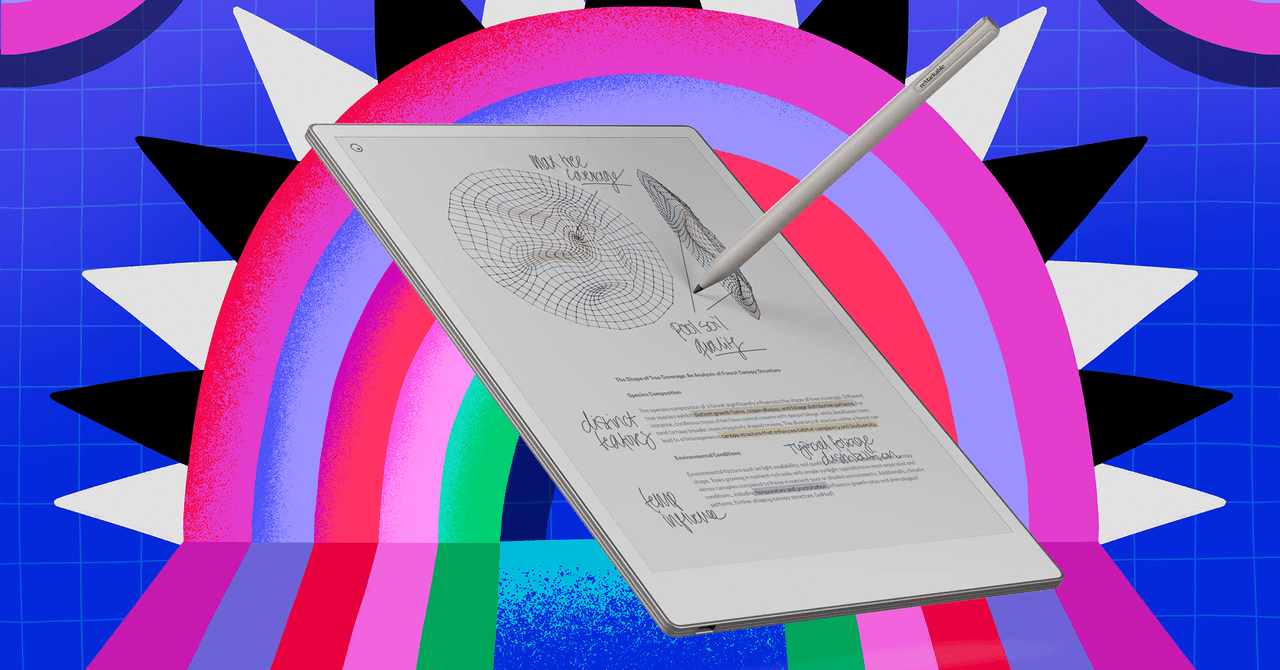Tech
Why the future of work is agentic | Computer Weekly

While artificial intelligence (AI) was certainly the top topic of discussion during Forrester’s Technology & Innovation Summit, the conversation appears to have moved on. In preparation for the era of agentic AI, organisations are starting to consider where employees fit; where to use contractors and external service providers; and what tasks should be AI-enabled internally.
In a blog post to tie in with the event, Forrester research director Mark Moccia wrote about how a third of CIOs will adopt “gig worker protocols”, where IT teams comprise AI agents, gig workers and employees with multiple jobs.
In his keynote presentation at the Technology & Innovation Summit, Manuel Geitz, Forrester principal analyst, discussed how business and technology leaders should prepare for this shift. “You start by really understanding which expertise you need to drive your business model,” he told attendees.
For Geitz, IT leaders can get their organisations ready for workflows that may be split between internal staff, external contractors and AI agents by capturing the knowledge using structured data ontologies, to make expertise machine readable. He suggested delegates can then begin to experiment with business models that monetise this expertise on demand, eventually building a platform, where AI agents become the front line for knowledge delivery, supported by humans.
The idea of a gig economy using AI agents is something that appears to be gaining traction among industry commentators. In a recent conversation with Computer Weekly, Jessica Apotheker, managing director and chief marketing officer at Boston Consulting Group (BCG), discussed how the marketing function – which tends to draw on both external and internal expertise – could evolve with an agentic AI workflow. As an example, she discussed the content production workflow.
“There’s a tonne of external people working in the content work group,” she said. “There’s creative agencies, production agencies, localisation agencies. There’s internal people and local marketers, and there’s the tech people. All these people need to come together and reinvent.”
According to Apotheker, this is because AI has the potential to change the content workflow process. IT and business decision-makers need to reconsider what parts of the process they want to own and what parts can be automated, or should be outsourced to a service provider who may well use AI and automation to complete the work: “What is the part of the workflow I think I need to strategically own and transform, and how will that connect with what I actually outsource or potentially automate myself?”
Putting a price on value
Research from BCG suggests organisations that are seeing significant business benefits from deploying AI tend to be AI-first, which means business leaders reconsider the role people have in a business process or workflow, where some aspects can and will be automated with AI.
“Think of an AI-first workflow,” said Apotheker. “You need to rethink what you make and what you buy. It is not obvious that your current make or buy strategy is the one that you need. You just want your contractor to do the automation on their piece of the workflow.”
In a recent podcast, Prem Ananthakrishnan, global software practice lead at Accenture, discussed how the use of AI and agentic AI in business processes is shifting how people think about software.
“There is a fundamental change from understanding that software cannot just be purchased as a tool, to thinking about software as a collaborator that’s driving an outcome for the business,” he said.
This is the next shift in software licensing, one that moves purchases of technological capabilities beyond consumption-based pricing. Mirroring the remarks of the Forrester analysts and BCG’s Apotheker, Ananthakrishnan said: “We still think of buying software as procuring a tool. We need to think about procuring a collaboration vehicle. In my view, IT buyers need to evolve from thinking about procurement to performance and design thinking. Don’t think about buying software anymore. Think about how you’re hiring digital teammates.”
Ananthakrishnan believes these digital teammates will be paid based on outcomes, using what he terms “value-based pricing”.
This is a huge mindset shift, but business and IT leaders can start with something they already have a grasp of: business process outsourcing (BPO) – evaluating which parts of the process are strategic should remain in-house. In the conversations Apotheker has had with organisations that are considering an extreme makeover of their workflows and business processes, she said: “Either you take a BPO approach and fully outsource to somebody, hope that they will transform the process with AI and incentivise on outcomes, or you reshape the process internally.”
For now, Accenture’s Ananthakrishnan noted that token-based pricing and AI credits, which are often applied when purchasing AI-based services, are proxies for value. The more an AI service is used, the more tokens are needed and the more credits are consumed. He said these consumption-based pricing models provide a bridge to leading to an outcome-based pricing model where organisations hire AI agents to take on work.
Ananthakrishnan recommended that IT leaders start implementing business impact metrics, such as linking return on investment to an AI credit model. They might also consider a hybrid model priced on an upfront AI credit, where the supplier is paid a bonus if a certain outcome is achieved.
There is plenty to consider as working practices adapt to include agentic AI – but irrespective of whether AI-enhanced work is achieved internally or via an external service provider, value-based pricing is coming, and people in IT leadership and procurement will need to assess how risk versus return changes when the product or service that is being procured is a probabilistic environment rather than a very deterministic environment.
Tech
I’ve Tried Every Digital Notebook. Here Are the Best Ones on Sale

I love a digital notebook. I write about them all year long here at WIRED, and it’s not often my favorites go on sale. (Or for any to go on sale, besides Amazon’s own sale events.) But this year, multiple digital notebooks I love are on sale for the biggest sale event of the year.
If you’ve thought about getting one of these for yourself, there’s truly no better moment. From reMarkable’s on-sale bundles to Kobo’s deals, you can shop five of the best digital notebooks we’ve ever tried right now at a lower price than you might find until next year. They’re a handy device just about everyone can enjoy, whether you want to digitally annotate your books or write out your grocery list without using a piece of paper.
Looking for more great sales to shop? Don’t miss our guides to the Best Amazon Device and Kindle Deals, Best Laptop Deals, the Absolute Best Cyber Monday Deals, and our liveblog.
Update Dec. 1: We updated prices, links, and deals, and added the Rocketbook Fusion Plus notebook.
The Best Digital Notebook Deals
Some of the best digital notebooks we’ve tried come from reMarkable, and one of reMarkable’s models always seems to reign supreme over our digital notebooks guide. While the Paper Pro Move is the newest model, the reMarkable Paper Pro that launched in September 2024 is my current all-around favorite. It’s not only powerful with tons of tools and an easy interface, but packs a color screen for colorful notes. It also has a gentle front light so that you can use it in darker environments. You can get the bundles on sale right now, so combine one of reMarkable’s markers and folio covers with a Paper Pro to get $50 off.
The best discount from reMarkable is actually for its older device and our previous top pick, the reMarkable 2. It doesn’t have a color screen or the front light, but you’ll get the reMarkable’s great software and options for accessories like the Keyboard Folio to use it like a laptop. The reMarkable 2 bundles are also on sale, so add on your favorite folio of choice on reMarkable’s website to get $70 off.
The Kobo Libra Colour is my favorite all-around e-reader with its color screen and page turner buttons, but you can add on a stylus to have it double as a digital notebook. It’s one of the more affordable options, and it’s a smaller screen than the rest of these, but I especially love that you can use the stylus to doodle on the books you’re reading (something you can’t do with the Kindle Scribe). It’s $30 off on Kobo’s site for Cyber Monday.
The second-generation Kindle Scribe isn’t the best digital notebook, but the long battery life (12 weeks!!) and convenient starting point of it being a Kindle I could already be reading on makes it a great go-to for casual notetakers and doodlers. It’s a good choice for Kindle and Amazon users, and there are new models due out this winter, but they likely won’t be as cheap as this one. (Especially since some of those new models will have color!)
If you like the idea of getting a Kobo e-reader that doubles as a digital notebook, you can go for more of a classic size with the larger Elipsa 2E. This one comes with the stylus, so you won’t have to add it on, and it’s $50 off.
The Rocketbook Fusion Plus digital planner and notebook is for those who don’t want to charge their notebook or give up on the whole “paper” experience. Take notes with the included, erasable Pilot Frixion Pen, scan photos of the pages into the app, and erase the whole thing with the damp microfiber cloth (also included). Fusion Plus is on its steepest discount of recent memory, and comes templates that range from monthly and weekly pages to project management and meeting notes.
Power up with unlimited access to WIRED. Get best-in-class reporting and exclusive subscriber content that’s too important to ignore. Subscribe Today.
Tech
Artificial tendons give muscle-powered robots a boost

Our muscles are nature’s actuators. The sinewy tissue is what generates the forces that make our bodies move. In recent years, engineers have used real muscle tissue to actuate “biohybrid robots” made from both living tissue and synthetic parts. By pairing lab-grown muscles with synthetic skeletons, researchers are engineering a menagerie of muscle-powered crawlers, walkers, swimmers, and grippers.
But for the most part, these designs are limited in the amount of motion and power they can produce. Now, MIT engineers are aiming to give bio-bots a power lift with artificial tendons.
In a study appearing today in the journal Advanced Science, the researchers developed artificial tendons made from tough and flexible hydrogel. They attached the rubber band-like tendons to either end of a small piece of lab-grown muscle, forming a “muscle-tendon unit.” Then they connected the ends of each artificial tendon to the fingers of a robotic gripper.
When they stimulated the central muscle to contract, the tendons pulled the gripper’s fingers together. The robot pinched its fingers together three times faster, and with 30 times greater force, compared with the same design without the connecting tendons.
The researchers envision the new muscle-tendon unit can be fit to a wide range of biohybrid robot designs, much like a universal engineering element.
“We are introducing artificial tendons as interchangeable connectors between muscle actuators and robotic skeletons,” says lead author Ritu Raman, an assistant professor of mechanical engineering (MechE) at MIT. “Such modularity could make it easier to design a wide range of robotic applications, from microscale surgical tools to adaptive, autonomous exploratory machines.”
The study’s MIT co-authors include graduate students Nicolas Castro, Maheera Bawa, Bastien Aymon, Sonika Kohli, and Angel Bu; undergraduate Annika Marschner; postdoc Ronald Heisser; alumni Sarah J. Wu ’19, SM ’21, PhD ’24 and Laura Rosado ’22, SM ’25; and MechE professors Martin Culpepper and Xuanhe Zhao.
Muscle’s gains
Raman and her colleagues at MIT are at the forefront of biohybrid robotics, a relatively new field that has emerged in the last decade. They focus on combining synthetic, structural robotic parts with living muscle tissue as natural actuators.
“Most actuators that engineers typically work with are really hard to make small,” Raman says. “Past a certain size, the basic physics doesn’t work. The nice thing about muscle is, each cell is an independent actuator that generates force and produces motion. So you could, in principle, make robots that are really small.”
Muscle actuators also come with other advantages, which Raman’s team has already demonstrated: The tissue can grow stronger as it works out, and can naturally heal when injured. For these reasons, Raman and others envision that muscly droids could one day be sent out to explore environments that are too remote or dangerous for humans. Such muscle-bound bots could build up their strength for unforeseen traverses or heal themselves when help is unavailable. Biohybrid bots could also serve as small, surgical assistants that perform delicate, microscale procedures inside the body.
All these future scenarios are motivating Raman and others to find ways to pair living muscles with synthetic skeletons. Designs to date have involved growing a band of muscle and attaching either end to a synthetic skeleton, similar to looping a rubber band around two posts. When the muscle is stimulated to contract, it can pull the parts of a skeleton together to generate a desired motion.
But Raman says this method produces a lot of wasted muscle that is used to attach the tissue to the skeleton rather than to make it move. And that connection isn’t always secure. Muscle is quite soft compared with skeletal structures, and the difference can cause muscle to tear or detach. What’s more, it is often only the contractions in the central part of the muscle that end up doing any work — an amount that’s relatively small and generates little force.
“We thought, how do we stop wasting muscle material, make it more modular so it can attach to anything, and make it work more efficiently?” Raman says. “The solution the body has come up with is to have tendons that are halfway in stiffness between muscle and bone, that allow you to bridge this mechanical mismatch between soft muscle and rigid skeleton. They’re like thin cables that wrap around joints efficiently.”
“Smartly connected”
In their new work, Raman and her colleagues designed artificial tendons to connect natural muscle tissue with a synthetic gripper skeleton. Their material of choice was hydrogel — a squishy yet sturdy polymer-based gel. Raman obtained hydrogel samples from her colleague and co-author Xuanhe Zhao, who has pioneered the development of hydrogels at MIT. Zhao’s group has derived recipes for hydrogels of varying toughness and stretch that can stick to many surfaces, including synthetic and biological materials.
To figure out how tough and stretchy artificial tendons should be in order to work in their gripper design, Raman’s team first modeled the design as a simple system of three types of springs, each representing the central muscle, the two connecting tendons, and the gripper skeleton. They assigned a certain stiffness to the muscle and skeleton, which were previously known, and used this to calculate the stiffness of the connecting tendons that would be required in order to move the gripper by a desired amount.
From this modeling, the team derived a recipe for hydrogel of a certain stiffness. Once the gel was made, the researchers carefully etched the gel into thin cables to form artificial tendons. They attached two tendons to either end of a small sample of muscle tissue, which they grew using lab-standard techniques. They then wrapped each tendon around a small post at the end of each finger of the robotic gripper — a skeleton design that was developed by MechE professor Martin Culpepper, an expert in designing and building precision machines.
When the team stimulated the muscle to contract, the tendons in turn pulled on the gripper to pinch its fingers together. Over multiple experiments, the researchers found that the muscle-tendon gripper worked three times faster and produced 30 times more force compared to when the gripper is actuated just with a band of muscle tissue (and without any artificial tendons). The new tendon-based design also was able to keep up this performance over 7,000 cycles, or muscle contractions.
Overall, Raman saw that the addition of artificial tendons increased the robot’s power-to-weight ratio by 11 times, meaning that the system required far less muscle to do just as much work.
“You just need a small piece of actuator that’s smartly connected to the skeleton,” Raman says. “Normally, if a muscle is really soft and attached to something with high resistance, it will just tear itself before moving anything. But if you attach it to something like a tendon that can resist tearing, it can really transmit its force through the tendon, and it can move a skeleton that it wouldn’t have been able to move otherwise.”
The team’s new muscle-tendon design successfully merges biology with robotics, says biomedical engineer Simone Schürle-Finke, associate professor of health sciences and technology at ETH Zürich.
“The tough-hydrogel tendons create a more physiological muscle–tendon–bone architecture, which greatly improves force transmission, durability, and modularity,” says Schürle-Finke, who was not involved with the study. “This moves the field toward biohybrid systems that can operate repeatably and eventually function outside the lab.”
With the new artificial tendons in place, Raman’s group is moving forward to develop other elements, such as skin-like protective casings, to enable muscle-powered robots in practical, real-world settings.
This research was supported, in part, by the U.S. Department of Defense Army Research Office, the MIT Research Support Committee, and the National Science Foundation.
Tech
The Best Cyber Monday Streaming Deals With a Convenient Roommate’s Email Address

HBO knows you’re bored and cold. It wants you to Max and chill with Noah Wyle in scrubs. The company offers some of the best Cyber Monday streaming deals with a ridiculously low-priced $3/month offer for basic HBO Max (it’s the version with ads and 2K streaming, but still, super-cheap). Disney Plus and Hulu deals are bundled up for $5/month. Apple TV wants back in your life for $6.
Of course, this deal is only meant for new customers. Not boring ol’ existing customers. If you already have basic HBO Max, you’re already paying $11 for the same service, and HBO would like you to keep doing that. Streaming apps are banking on you being complacent and happy in your streaming life. Maybe they’re even taking you for granted.
Sometimes you can get the current deal just by threatening to cancel, or actually canceling, your account. Suddenly, you’re an exciting new customer again! Another method is by using an alternate email account (perhaps your spouse’s or roommate’s?) and alternate payment information as a new customer. If you do use a burner email (you did not hear this from me), check in on your favorite app’s terms of service to make sure you’re not in violation by re-enrolling with different emails. I’ll also issue the caveat that you lose all your viewing data and tailored suggestions if you sign up anew.
But times and wallets are tight! And $3 HBO Max sounds pretty good. After all, every middle-aged American man needs to rewatch The Wire once every five years or so—assuming he’s not the kind of middle-aged man who rewatches The Sopranos instead. Here are the current best streaming deals for Cyber Monday 2025.
Devon Maloney; ARCHIVE ID: 546772
Regular price: $80
-

 Sports1 week ago
Sports1 week agoWATCH: Ronaldo scores spectacular bicycle kick
-

 Entertainment1 week ago
Entertainment1 week agoWelcome to Derry’ episode 5 delivers shocking twist
-

 Politics1 week ago
Politics1 week agoWashington and Kyiv Stress Any Peace Deal Must Fully Respect Ukraine’s Sovereignty
-

 Business1 week ago
Business1 week agoKey economic data and trends that will shape Rachel Reeves’ Budget
-

 Politics1 week ago
Politics1 week ago53,000 Sikhs vote in Ottawa Khalistan Referendum amid Carney-Modi trade talks scrutiny
-

 Tech6 days ago
Tech6 days agoWake Up—the Best Black Friday Mattress Sales Are Here
-

 Tech1 day ago
Tech1 day agoGet Your Steps In From Your Home Office With This Walking Pad—On Sale This Week
-

 Fashion1 week ago
Fashion1 week agoCanada’s Lululemon unveils team Canada kit for Milano Cortina 2026



-Reviewer-Photo-SOURCE-Nena-Farrell.jpg)










